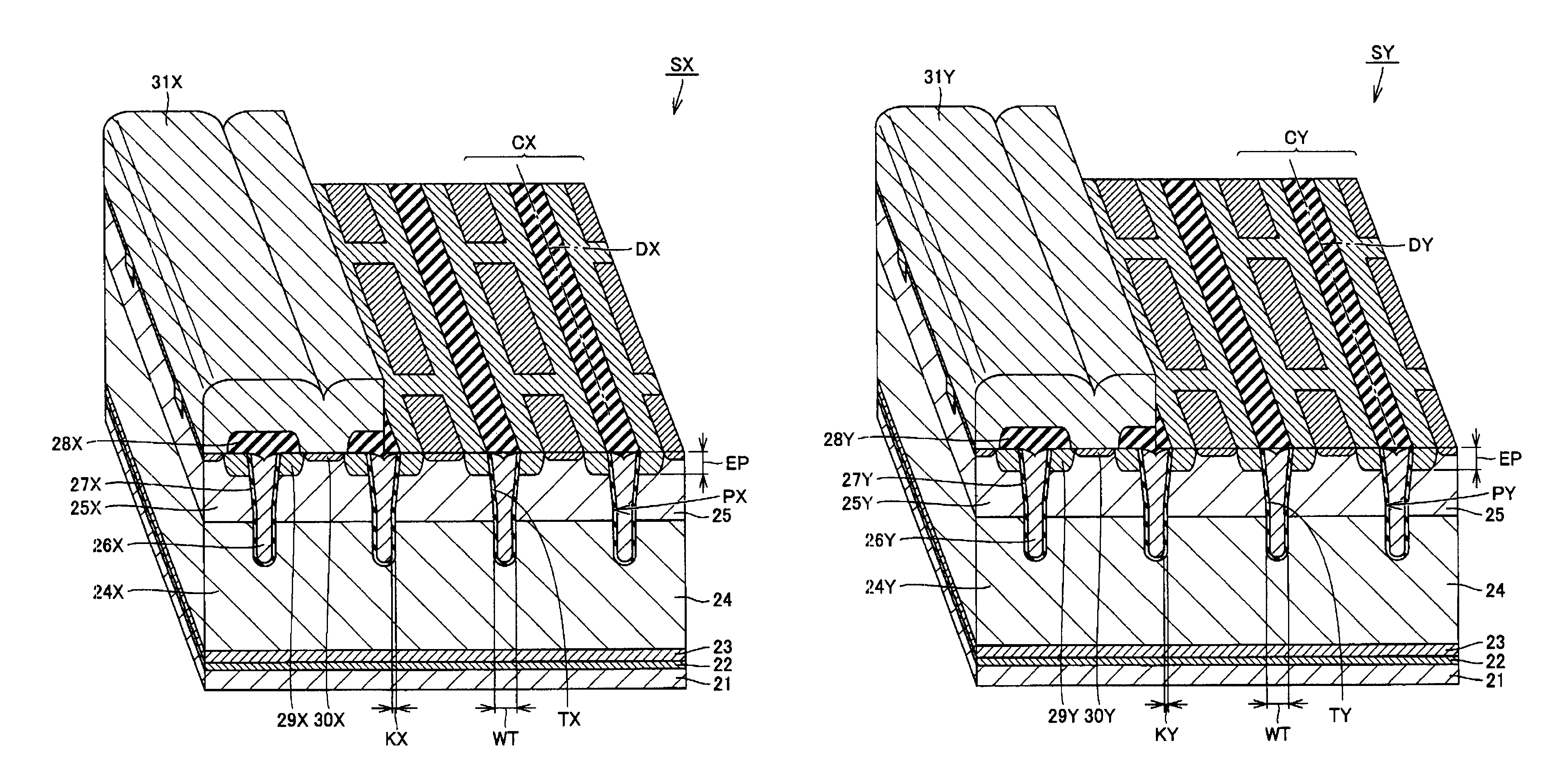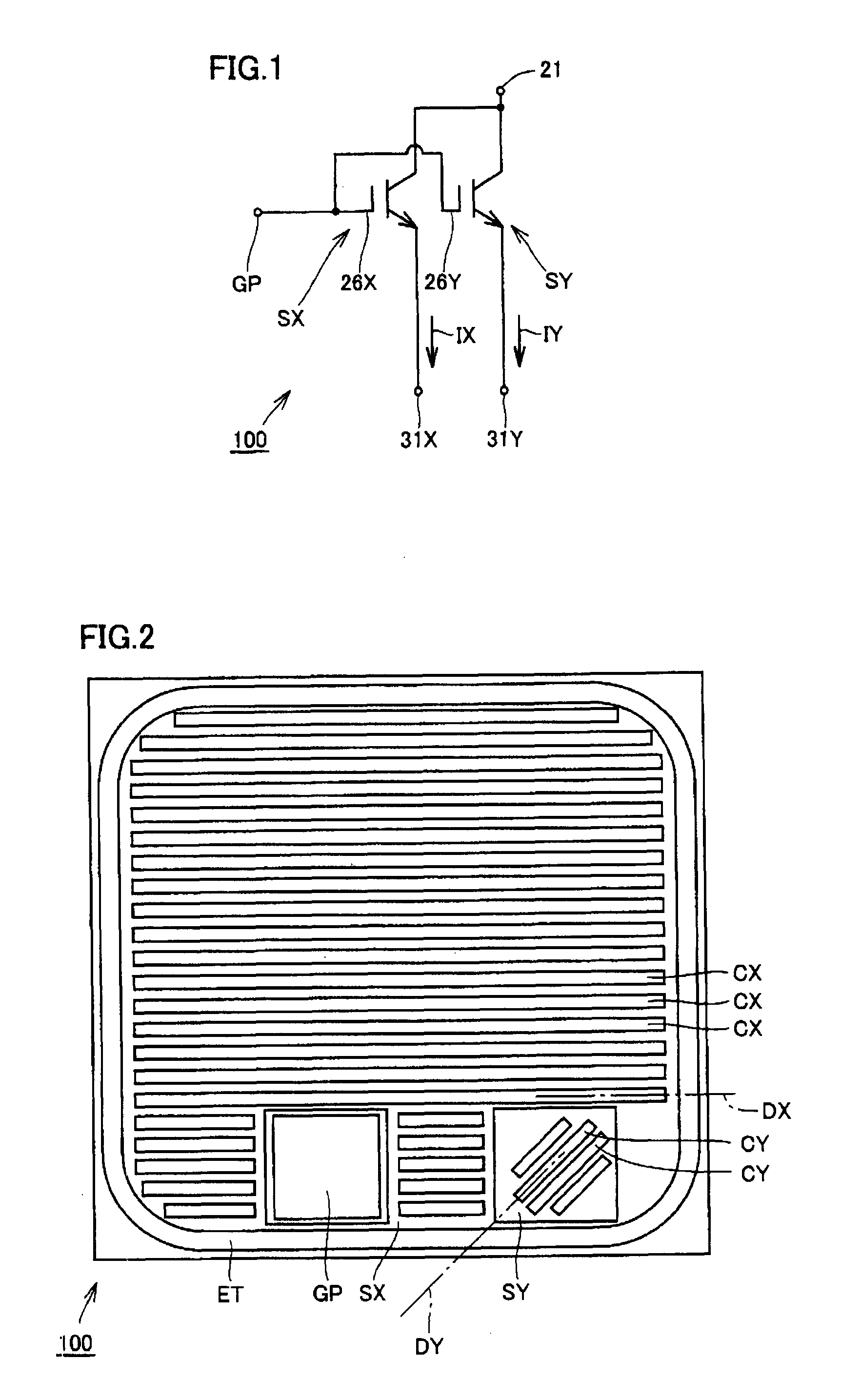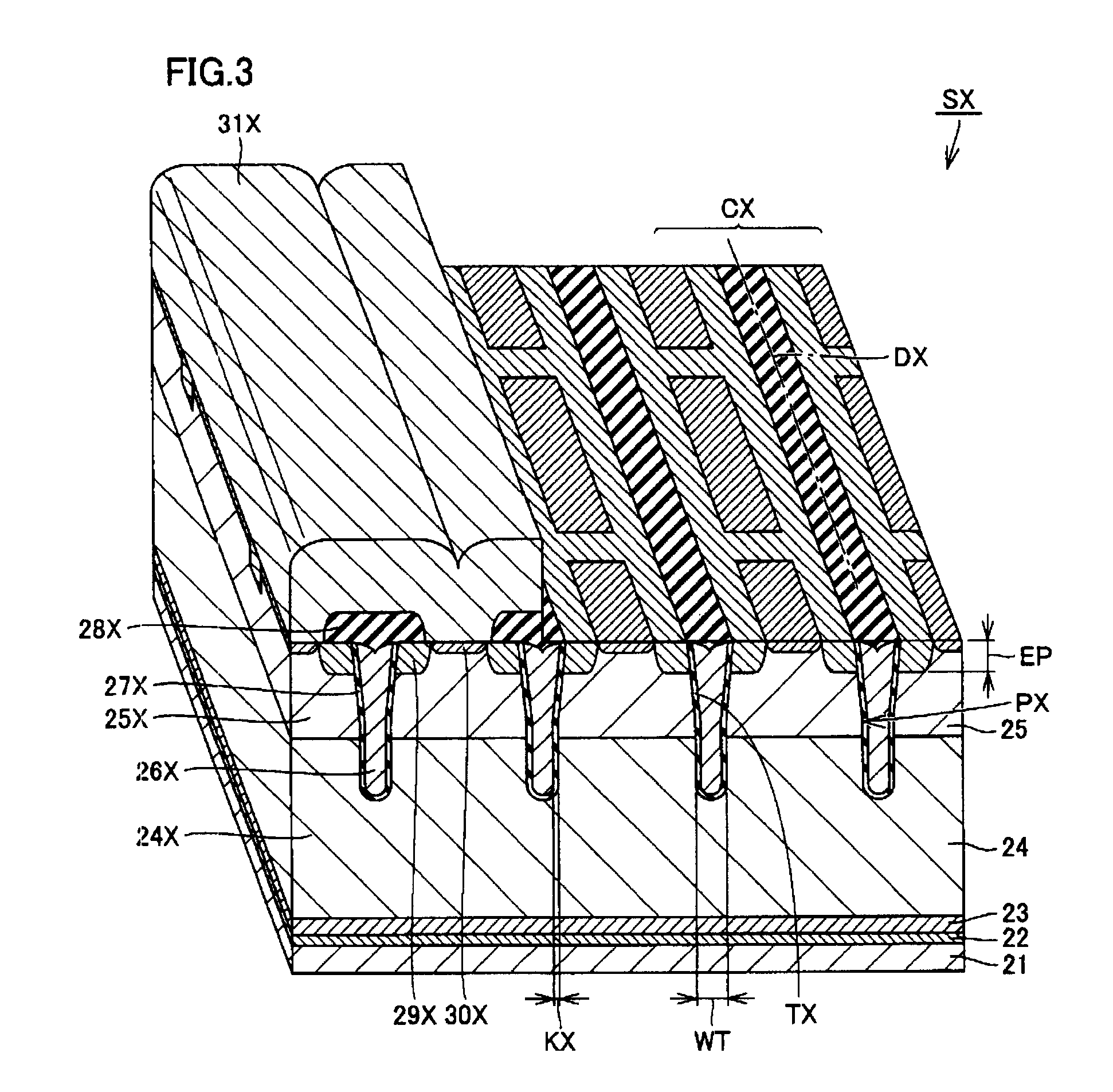Semiconductor device and method of manufacturing the same
a semiconductor device and manufacturing method technology, applied in the direction of semiconductor devices, electrical devices, transistors, etc., can solve the problems of increasing the number of photolithography steps performed, complicated manufacturing process of semiconductor devices, etc., and achieve the effect of suppressing the increase in complexity of the manufacturing process
- Summary
- Abstract
- Description
- Claims
- Application Information
AI Technical Summary
Benefits of technology
Problems solved by technology
Method used
Image
Examples
first embodiment
[0042](First Embodiment)
[0043]Referring to FIG. 1, a semiconductor device 100 in the present embodiment is a power semiconductor device, and includes a main portion SX (first semiconductor element portion), a sense portion SY (second semiconductor element portion), and a gate pad GP. Main portion SX and sense portion SY are IGBT portions for switching a main current IX (first current) and a sense current IY (second current), respectively, in accordance with a voltage of gate pad GP. An absolute value of sense current IY is smaller than an absolute value of main current IX, e.g., about one-thousandth of the absolute value of main current IX, and a waveform of sense current IY substantially corresponds to a waveform of main current IX. Thus, sense current IY can be used as a current for monitoring a value of main current IX in order to check whether it is excessive or not.
[0044]Main portion SX includes a main gate electrode 26X as its gate electrode, a main emitter electrode 31X as it...
second embodiment
[0085](Second Embodiment)
[0086]Referring mainly to FIG. 7, a semiconductor device according to the present embodiment includes a sense portion SYa instead of sense portion SY (FIG. 4) in the first embodiment. Sense portion SYa includes a sense cell CYa arranged similarly to sense cell CY (FIG. 4).
[0087]Sense portion SYa also includes, instead of sense n+ source portion 29Y of sense portion SY (FIG. 4), a sense n+ source portion 29Ya having a depth EPa different from depth EP of sense n+ source portion 29Y for each sense cell CYa. With this configuration, depth EP (FIG. 3) of main n+ source portion 29X (first source portion) of main portion SX and depth EPa (FIG. 7) of sense n+ source portion 29Ya (second source portion) of sense portion SYa in the semiconductor device according to the present embodiment are different from each other.
[0088]The configuration is otherwise substantially the same as in the first embodiment described above, and thus the same or corresponding elements have...
third embodiment
[0100](Third Embodiment)
[0101]A semiconductor device according to the present embodiment includes a main portion SXb (FIG. 11) and a sense portion SYb (FIG. 12) instead of main portion SX (FIG. 3) and sense portion SY (FIG. 4) in the first embodiment, respectively.
[0102]Referring to FIG. 11, main portion SXb includes a main cell CXb arranged similarly to main cell CX (FIG. 3). Main portion SXb also includes, instead of main n+ source portion 29X and main p+ contact portion 30X of main portion SX (FIG. 3), a main n+ source portion 29Xb and a main p+ contact portion 30Xb, respectively, for each main cell CXb. Main n+ source portion 29Xb and main p+ contact portion 30Xb are arranged in stripes along main direction DX when viewed two-dimensionally, and constitutes a so-called stripe structure. Main n+ source portion 29Xb and main p+ contact portion 30Xb have a first source width WnX and a first contact width WpX (first width) along main direction DX, respectively. Thus, the plurality of...
PUM
 Login to View More
Login to View More Abstract
Description
Claims
Application Information
 Login to View More
Login to View More - R&D
- Intellectual Property
- Life Sciences
- Materials
- Tech Scout
- Unparalleled Data Quality
- Higher Quality Content
- 60% Fewer Hallucinations
Browse by: Latest US Patents, China's latest patents, Technical Efficacy Thesaurus, Application Domain, Technology Topic, Popular Technical Reports.
© 2025 PatSnap. All rights reserved.Legal|Privacy policy|Modern Slavery Act Transparency Statement|Sitemap|About US| Contact US: help@patsnap.com



